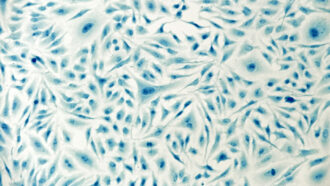
Animals
Rudolph’s red nose could glow through bioluminescence
Simple chemistry could give the reindeer his iconic red snout. But physics would make it look different colors to anyone who spied Rudolph from the ground.
Come explore with us!

Simple chemistry could give the reindeer his iconic red snout. But physics would make it look different colors to anyone who spied Rudolph from the ground.

Let’s strap skis to an action figure to see how long sticks of wood help people glide gracefully over snow.

Four types of smaller flames create the perfect firestorm of elegantly efficient combustion.

The new tech created barcodes, micro-lasers and a tiny elephant — all in living cells.

This microphone can “hear” by viewing the tiny vibrations made in everyday objects as sound waves strike them.

The handheld printer might someday apply bone-repair patches directly onto fractures — complete with antibiotics to prevent infection.
Two black holes merged, creating a new, bigger one. This event triggered the clearest ripples in spacetime ever observed.

To study phenomena that unfold over decades or even centuries, scientists may launch projects they may never see finished.

Materials known as metal-organic frameworks, or MOFs, trap some PFAS fast — and can be reused again and again.

This bizarre collection of “standard reference materials” help ensure the safety of waterways, buildings, medicines, foods and much more.